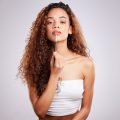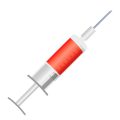1. The Rise of Raw Beauty Content
In recent years, beauty content has taken a major turn — and TikTok is leading the charge. Gone are the days of overly edited, polished YouTube tutorials with perfect lighting, flawless skin, and 10-step routines. Today’s audiences want something different: real people, real skin, and real results. TikTok has become the home of raw, unfiltered beauty content that feels more like FaceTiming a friend than watching a production.
This shift isnt just about aesthetics — its about authenticity. Users are drawn to creators who show their bare faces, talk openly about their insecurities, and test products live without filters or scripts. Unlike traditional YouTube videos that often feel rehearsed or sponsored, TikTok tutorials tend to be spontaneous and brutally honest. This kind of transparency builds trust — fast.
Why TikTok Beauty Feels More Real
People crave connection over perfection. On TikTok, creators share their full journey, including breakouts, product fails, and skincare mistakes. This makes them more relatable and trustworthy compared to YouTubers who sometimes only show the final “after” look.
Main Differences Between TikTok and YouTube Beauty Content
| Feature | TikTok | YouTube |
|---|---|---|
| Video Length | Short-form (15 sec – 3 min) | Long-form (5 – 20 min) |
| Editing Style | Minimal editing, casual vibes | Highly edited, professional look |
| Content Tone | Raw & honest | Polished & curated |
| Product Reviews | Unfiltered first impressions | Often sponsored or strategic reviews |
| User Engagement | High interaction via comments & stitches | Less interactive in real-time |
The Power of Vulnerability in Beauty Content
TikTok beauty creators aren’t afraid to show imperfections. Whether it’s acne, textured skin, or a mascara fail — they let it all out there. This vulnerability resonates deeply with Gen Z and Millennials who value honesty over the illusion of flawlessness.
Example:
A creator might try on a foundation for the first time while filming and say things like “Okay wait… this looks orange on my skin,” instead of pretending everything looks perfect. That kind of unscripted moment is exactly what keeps viewers coming back.
This raw approach is redefining beauty standards by reminding everyone that perfection isn’t the goal — being real is.
2. The Downfall of the YouTube Glam Era
Remember when we’d sit down for 30-minute YouTube beauty tutorials, watching our favorite gurus blend, bake, and bronze their way to a flawless look? That was peak YouTube glam era. But fast forward to now, and those polished videos are slowly losing their sparkle. What happened?
The Rise of Realness
TikTok has completely changed how we consume beauty content. Instead of long, edited videos with perfect lighting and scripted voiceovers, people are now leaning into quick clips that feel raw and unfiltered. It’s not about perfection anymore—it’s about real skin, real reactions, and real results.
Why Long-Form Beauty Content Is Losing Its Shine
YouTube glam used to be the gold standard for beauty tutorials. But as trends shift toward authenticity and speed, these long-form videos just don’t fit the bill anymore. Here’s a simple breakdown:
| YouTube Glam Videos | TikTok Tutorials |
|---|---|
| Highly edited and polished | Raw and unfiltered |
| 20–40 minutes long | 15 seconds to 3 minutes |
| Focus on full-face glam looks | Focus on everyday hacks or honest reviews |
| Scripted and brand-sponsored | Candid and authentic reactions |
| Less frequent uploads | Multiple uploads per day possible |
Short Attention Spans = Quick Beauty Fixes
Let’s be real—no one has time to watch a full face routine that takes longer than our lunch break. TikTok delivers bite-sized beauty tips in under a minute, making it easy to scroll, learn, and shop all at once. It’s like fast food for your beauty brain—and people are eating it up.
The Power of Peer-Like Creators
TikTok creators often feel more like friends than influencers. They film in their bedrooms, under regular lighting, without fancy equipment—and that relatability builds trust. Compared to the “celebrity” vibes of top YouTubers, TikTok feels more approachable and authentic.
No More Over-Editing Fatigue
Let’s not forget how tiring it got watching overly filtered makeup routines where every step looked impossibly perfect. On TikTok, if a product doesn’t work—you see it right away. If someone breaks out from a cream—you hear about it instantly. That honesty is refreshing in a world full of filters.
![]()
3. Trust, Relatability, and the New Beauty Influencer
In today’s beauty world, Gen Z isnt buying into the overly polished, highly edited content that used to dominate YouTube. Instead, they’re turning to TikTok for realness — creators showing their unfiltered skin, honest reactions, and genuine experiences. It’s not about looking perfect anymore; it’s about being relatable.
Why? Because Gen Z consumers value authenticity over aesthetics. They want to see what a product actually looks like on real skin, with real lighting, and in everyday settings. When a creator shows their breakouts while reviewing skincare or admits a viral product didn’t work for them, it builds trust.
The Shift from Polished to Personal
YouTube was once the go-to for detailed tutorials and reviews, but it often came with perfect lighting, heavy editing, and sometimes even sponsorship bias. TikTok flipped that script. A 15-second clip filmed in someone’s bathroom mirror can now carry more weight than a 10-minute video shot in a professional studio.
What Gen Z Looks for in Beauty Content
| Old YouTube Standard | New TikTok Trend |
|---|---|
| High production quality | Unfiltered phone camera footage |
| Scripted voiceovers | Spontaneous reactions |
| Sponsored content with disclaimers (sometimes hidden) | Raw opinions without brand ties |
| Perfect skin and makeup looks | Real skin texture and flaws shown openly |
The Rise of the “Anti-Influencer” Influencer
This cultural shift has given rise to a new kind of beauty influencer — someone who doesn’t need flawless makeup skills or a ring light setup. They’re more like your brutally honest friend who tells you if something sucks or slaps. And because they don’t sugarcoat their opinions, people listen.
In fact, many Gen Z users are more likely to purchase a product based on a chaotic, emotional TikTok rant than a perfectly edited YouTube review. Why? Because they believe it. The passion feels real — and real sells.
4. Impact on Brands and Marketing Strategies
The rise of raw, unfiltered TikTok beauty content has completely shifted how brands approach marketing. Gone are the days when polished YouTube tutorials with perfect lighting and scripted product placements were enough to sell out a product. Today’s consumers—especially Gen Z—crave authenticity, relatability, and transparency. As a result, beauty brands are rethinking their strategies to better align with this unfiltered aesthetic.
Shifting from Perfection to Realness
Brands now understand that users respond more positively to real people sharing genuine opinions rather than influencers with flawless makeup in a studio setting. This shift means embracing imperfections: acne, uneven skin tones, or even makeup fails. These moments build trust with audiences and create a sense of community over perfection.
Partnering with Micro-Influencers
Instead of relying solely on big-name YouTubers or celebrities, brands are increasingly working with micro-influencers who have smaller but highly engaged followings. These creators often produce content that feels more like a friend’s recommendation than an ad, which fits perfectly into the TikTok vibe.
Comparison: Old vs. New Marketing Approaches
| Traditional YouTube Approach | TikTok-Inspired Strategy |
|---|---|
| Scripted tutorials with high production value | Casual, spontaneous reviews filmed on phones |
| Polished influencer collaborations | Raw content from relatable creators |
| Long-form videos (10+ minutes) | Short-form videos (under 60 seconds) |
| Focus on brand image & perfection | Focus on honesty & everyday use |
User-Generated Content Takes Center Stage
Beauty brands are also encouraging customers to create content using their products. Hashtag challenges, duets, and review prompts help foster engagement while providing authentic testimonials. This not only builds trust but also generates free marketing that resonates more deeply than traditional ads.
Real-Time Feedback Drives Product Development
TikTok’s fast-paced environment allows brands to receive instant feedback on new launches. If a product flops or goes viral, marketers can adjust their messaging—or even reformulate—based on what people are actually saying in the comments section or video replies.
Examples of Brands Embracing the Unfiltered Look:
- CeraVe: Gained popularity thanks to dermatologists and everyday users reviewing its simple formulas in casual videos.
- e.l.f. Cosmetics: Went viral by leaning into TikTok trends and using user-generated content for campaigns.
- Rare Beauty: Promotes self-expression and real skin representation through creator partnerships without heavy editing.
This unfiltered era is pushing beauty brands to become more transparent, human-centered, and responsive to what consumers actually want—not just what looks good on camera.
5. Future of Beauty Tutorials in the Age of Transparency
The beauty world is changing fast, and we’re seeing a major shift from polished, studio-lit YouTube videos to raw, unfiltered TikTok tutorials. This move toward transparency is shaking things up for everyone—from new content creators trying to make it big, to long-time influencers with millions of followers, and even the brands behind your favorite products.
What It Means for Aspiring Creators
If you’re just starting out in the beauty space, this is your moment. You don’t need fancy equipment or a massive following to be heard. Realness wins. Viewers today crave authenticity—they want to see what products look like on real skin, under real lighting, with real reactions. That means shaky camera angles, imperfect blending, and honest opinions aren’t just okay—they’re expected.
Why TikTok Is a Game-Changer:
| Old YouTube Era | New TikTok Era |
|---|---|
| Highly edited videos | Raw, quick clips |
| Perfect lighting and scripting | Natural lighting and spontaneous thoughts |
| Product-heavy sponsorships | User-first, honest reviews |
This democratization of beauty means that anyone with a phone and something to say can build an audience. The key? Stay honest. Viewers can tell when you’re faking it—and they’ll scroll right past.
The Challenge for Legacy Influencers
If you’ve been on YouTube for years, this shift might feel like a threat—but it’s also an opportunity. Legacy influencers who are willing to adapt by loosening their perfectly curated image can stay relevant. It’s no longer about being flawless; it’s about being relatable.
You may have built your brand on clean edits and HD closeups, but now’s the time to show your followers the unfiltered side—messy buns, smudged eyeliner, and all. Those who embrace this new wave of transparency can not only retain their audience but also connect more deeply than ever before.
The Industrys Next Move
Brands are watching closely. They’re realizing that consumers trust creators who keep it real over those who simply say what they’re paid to say. As a result, marketing strategies are shifting too. Instead of pushing perfect campaigns, brands are now looking for micro-influencers who deliver genuine reactions—even if it means admitting a product isn’t perfect.
How Brands Are Adapting:
| Traditional Campaigns | Evolving Strategies |
|---|---|
| Slick commercials with models | TikTok collabs with everyday users |
| Scripting influencer reviews | Letting creators speak freely |
| Avoiding negative feedback | Embracing honest criticism |
The future of beauty tutorials lies in honesty—not perfection. Whether youre an aspiring creator looking to stand out or a legacy influencer trying to evolve, one thing is clear: transparency isn’t just a trend—it’s the new standard.


